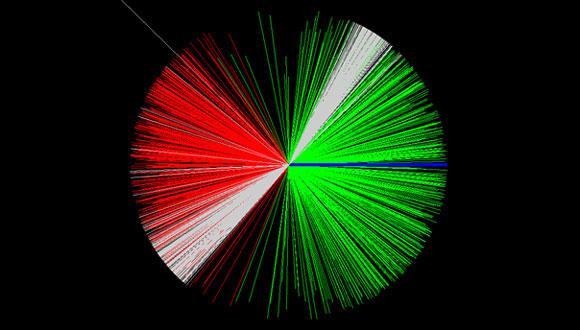Joint Seminar in Nuclear Physics: Search for a bound di-neutron by comparing 3He(e,e’p)d and 3H(e,e’p)X measurements
Zoom: https://tau-ac-il.zoom.us/j/87391087220?pwd=RGIxamZQb3VwMFIyVzA5M1phNUdxUT09
PROGRAM:
The first talk will be at Room 301 Shenkar Physics building.
14:00 - 14:45 - "Nuclear three-body short-range correlations in coordinate space", Ronen Weiss, Theoretical Division, Los Alamos National Laboratory
Abstract: We study the effects of three-nucleon short-range correlations on nuclear coordinate-space densities. For this purpose, novel three-body densities are calculated for ground state nuclei using the auxiliary-field diffusion Monte Carlo method. The results are analyzed in terms of the Generalized Contact Formalism, extended to include three-body correlations, revealing the universal behavior of nucleon triplets at short distances. We identify the quantum numbers of such correlated triplets and extract scaling factors of triplet abundances that can be compared to upcoming inclusive electron scattering data.
14:45 - 15:00 - Refreshments
15:00 - 16:00 - "Nuclear Arms Control with Nuclear Resonances", Areg Danagoulian, MIT
Abstract: Arms control treaties are not sufficient in and of themselves to neutralize the existential threat of the nuclear weapons. Technologies are necessary for verifying the authenticity of the nuclear warheads undergoing dismantlement before counting them towards a treaty partner’s obligation. We have developed a neutron-based concept which uses observations of isotope specific nuclear transitions to authenticate a warhead's fissile components. Most actinides exhibit unique sets of nuclear resonances when interacting with eV neutrons. When measured, these resonances produce isotope-specific absorption lines in the transmitted spectra, thus creating an isotopic-geometric "fingerprint" of an object. All information in these measurements is encrypted in the physical domain through a process called physical cryptography. Using proof-of-concept experiments, these techniques are shown to reveal no isotopic or geometric information about the weapon, while readily detecting hoaxing attempts. The talk will discuss the policy context, the physics behind the nuclear resonances, along with results from experimental measurements.
16:00 - 16:30 - Coffee break
16:30 - 17:30 - "The role of photoelectric and Compton interactions in the design of tissue substitutes for direct, in vivo measurement of internally deposited radioactive materials that emit only low energy photons and x-rays", Henry Spitz, University of Cincinnati
Abstract: Attenuation of low energy (E< 120-keV) photons and x-rays in an absorber is driven mainly by photoelectric interactions and Compton scattering. Detection of an inhaled radioactive material in the lungs using detectors positioned on the chest is greatly affected by these interactions in lung, muscle, adipose tissue, and bone present in the anterior thorax. This is especially important in detecting plutonium and other actinides in the lungs since radioactive emissions involve only low energy photons and x-rays and each of the tissues in the thorax has unique attenuation properties. Direct, in vivo measurements are performed whenever it is necessary for estimating risk whether a person has inhaled isotopes of plutonium and other actinides.
Detectors used to measure internally-deposited radioactive material are calibrated using anthropometric surrogates (i.e., phantoms) that reproduce the human anatomy and contain precisely known quantities of the radioactive material being measured. The phantoms are fabricated using substitutes for human tissues that exhibit the same mass and electron density and photon attenuation of natural tissues. Unlike measuring a radioactive material in a fixed sample container with a simple source-to-detector geometry, calibration of detectors used in performing in vivo measurements of an internally-deposited radioactive material must be sufficiently robust to accommodate a variety of body types and sizes. Tissue substitute materials must also reflect the radiological properties of the human tissue at the required photon energy.
Fabrication of a tissue substitute material involves combining a base material with one or more additives that, when cured, exhibits the physical and radiological properties of the desired tissue. Selecting the appropriate base material and additives is driven by photon energy since the type and interaction probability is highly energy dependent. The design of a tissue substitute formulation becomes more complex if the radiation encountered includes a range or continuous spectrum of low photon energies (E<120-keV) since the radiological properties of the cured material will be a complex combination of both photoelectric and Compton interactions. This presentation will describe methods for performing direct, in vivo measurements of inhaled radioactive material and the design, fabrication, and use of anthropometric phantoms for calibrating detectors. Although mathematical simulations and Monte Carlo analysis are used to predict the response of detectors for this application, direct benchmark measurements are always required to confirm the predicted detector response.


